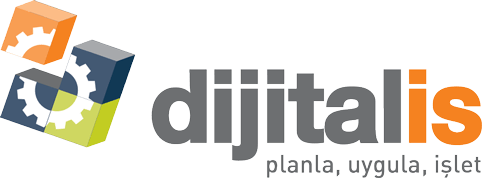Loading Planning and Optimization
Tough Questions
- How do I prevent empty spaces in my vehicle and container loadings?
- How can I ensure that my customers are ordering in exact multiples of vehicle or container quantities?
- Can I encourage my customer to place additional orders to fill the volume and increase my revenue?
Today's conditions put significant pressure on prices and quality while simultaneously obliging logistics planners to deliver products to their destinations as quickly as possible. Planners must make fast and accurate decisions based on past data. For example;
Through better vehicle loading, logistics costs (in terms of kilometers, time, and asset count) should be reduced,
Instant and accurate responses should be given to events that may occur (such as order changes, changes in vehicle or pallet types, etc.),
Planners should be able to consider the different needs of each customer (acceptance times for goods, ramp and equipment types, etc.) continuously and without errors,
Reliable delivery times should be provided to customers and adhered to,
Drivers' work and rest hours should be taken into account, and the correct vehicle type should be selected for each customer and route,
Both current and future workloads should be accurately predicted.
Undoubtedly, as companies increase their number of customers and orders, and as warehouses and fleets grow, meeting all these conditions successfully becomes more challenging.
Correct Answers
- If I could calculate the lowest-cost and shortest route by adhering to all rules such as warehouse stocks, vehicle fleet characteristics, and customer acceptance times in seconds...
- If I could maintain high vehicle occupancy along the route to carry out logistics with fewer vehicles...
- If I could manually intervene on the route and loads on the map and try different scenarios.
Wouldn't I both reduce my logistics costs and increase my customer service level at the same time?
Dijitalis enables smart planning for manufacturing and logistics companies with its Loading Optimization solutions.
Dijitalis' Loading Optimization solutions calculate the optimal loading plan by considering product dimensions, stackability, customer route sequence, orientation, and side-by-side stacking rules. Optimized loadings are visualized in three dimensions, and loading sequences and order items can be communicated to warehouse staff as instructions. Planners can test their own "what-if" scenarios on the three-dimensional loading plan using drag-and-drop on the map.
Vehicle Routing Planning and Optimization
Tough Questions
- How do I ensure accurate and timely delivery to the right place for high customer satisfaction?
- And at the same time, how do I achieve high vehicle occupancy and fuel savings?
Today's conditions put significant pressure on prices and quality while simultaneously obliging logistics planners to deliver products to their destinations as quickly as possible. Planners must make fast and accurate decisions based on past data. For example;
- Through better vehicle loading and routing, logistics costs (in terms of kilometers, time, and asset count) should be reduced,
- Instant and accurate responses should be given to events that may occur (such as order changes, traffic congestion, vehicle breakdowns, etc.),
- Planners should be able to continuously and accurately meet the different needs of each customer (goods acceptance times, ramp and equipment types, etc.),
- Reliable delivery times should be provided to customers and adhered to,
- Planners should consider drivers' working hours and rest periods, and select the correct vehicle type for each customer and route,
- Both current and future workloads should be accurately predicted.
Undoubtedly, as companies increase their number of customers and orders, and as warehouses and fleets grow, meeting all these conditions successfully becomes more challenging.
Correct Answers
- If I could calculate the lowest-cost and shortest route by adhering to all rules such as warehouse stocks, vehicle fleet characteristics, and customer acceptance times in seconds...
- If I could maintain high vehicle occupancy along the route to carry out logistics with fewer vehicles...
- If I could manually intervene on the route and loads on the map and try different scenarios.
Wouldn't I both reduce my logistics costs and increase my customer service level at the same time?
Dijitalis enables smart planning for manufacturing and logistics companies with its Vehicle Routing Optimization solutions.
Dijitalis' Vehicle Routing Optimization solutions calculate the optimal shipment routes by considering order, customer, and vehicle characteristics. Planned route maps are shown on the map, vehicle occupancy and trip costs are reported, and each route stop sequence and instructions are communicated to drivers. Planners can test their own "what-if" scenarios on the map, calculate the cost of new customer demands according to the optimum situation.
Under Dijitalis' umbrella of "Logistics Planning" solutions, strategic-level investment decisions (distribution strategies, warehouse and distribution center locations, fleet size, and optimization of vehicle types) and planning of static vehicle routes are made with much greater confidence.
At the tactical level, capacity is balanced in line with strategic plans against seasonality, customer, and industry trends.
At the operational and real-time level, daily operations are planned to achieve the highest compliance with tactical objectives under the dynamic conditions of the business world (traffic, weather, absent employees, vehicle breakdowns, last-minute order changes, etc.).
